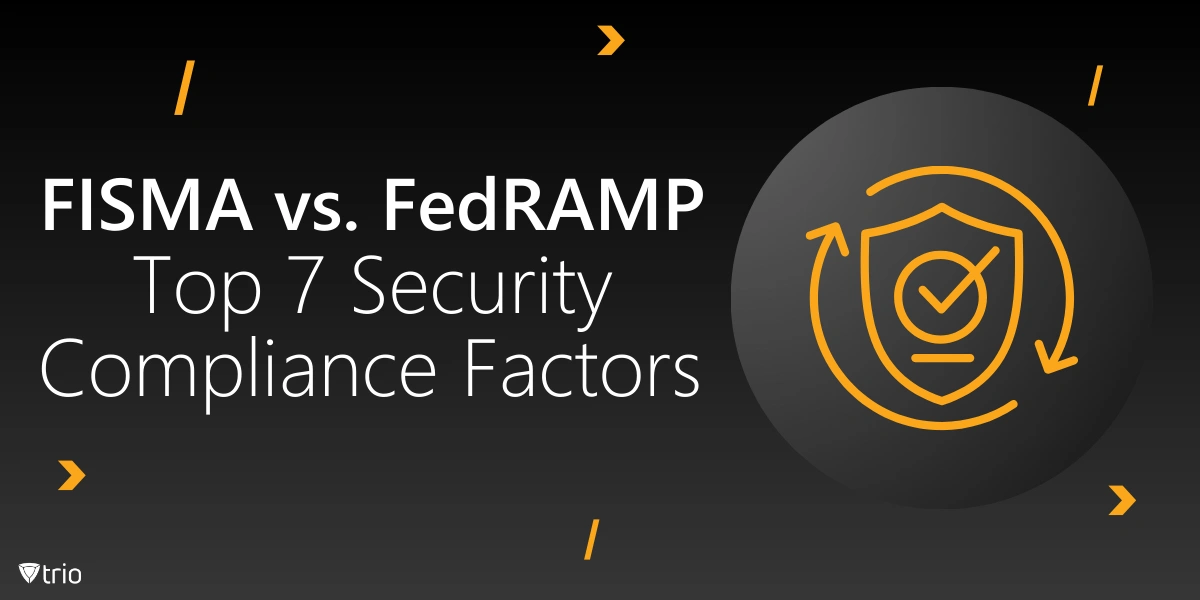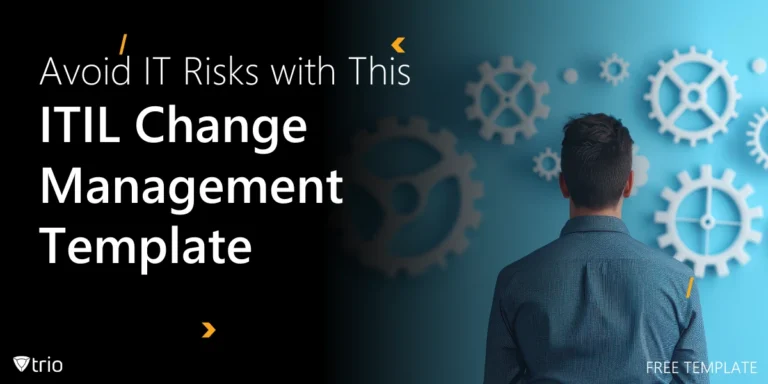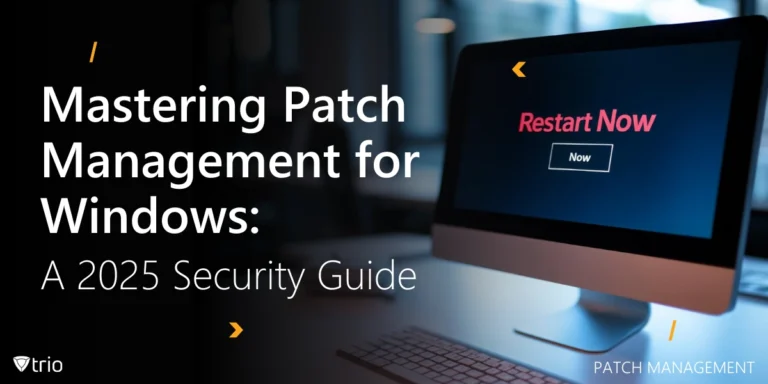For federal agencies and contractors, FISMA compliance is non-negotiable. But how do you decide between FISMA and FedRAMP? Each framework plays a key role in ensuring data protection for the federal government, and understanding the differences is crucial to meet the right standards.
This guide unpacks the top 7 compliance factors that IT admins should consider when navigating FISMA vs. FedRAMP. From authorization processes to data sensitivity, these factors provide insight into which framework aligns best with your information security needs and cloud-based operations.
The Federal Information Security Management Act (FISMA) sets the foundation for federal information security. It applies to all federal information systems and promotes strong security across the United States government. Meanwhile, the Federal Risk and Authorization Management Program (FedRAMP) focuses on cloud-based solutions, ensuring secure cloud adoption by government agencies and addressing unique IT compliance needs.
Type of Systems Covered
FISMA covers a wide array of information and information systems used by federal agencies. Think beyond the cloud; FISMA’s reach extends to all federal IT systems, regardless of type. It’s a comprehensive approach that looks at the different types of FISMA authorization for securing sensitive government data.
FedRAMP, on the other hand, hones in on cloud-based solutions. The authorization management program FedRAMP was designed to streamline cloud security standards and make it easier for cloud service providers to meet federal requirements. If your focus is cloud services, understanding the types of compliance specific to FedRAMP is really important.
Security Control Framework
FISMA leans on the NIST SP 800-53 controls developed by the National Institute of Standards and Technology. NIST SP 800-53 Revision 5 introduces 1,007 controls and enhancements, including 66 new base controls, 202 control enhancements, and 131 new parameters, significantly strengthening federal information security. These controls address a broad array of security measures, tailored to different federal systems. If you’re managing diverse systems, knowing how these controls fit each type of system is crucial for compliance.
FedRAMP builds on the same NIST framework but adapts it to cloud environments. By utilizing the FedRAMP moderate controls list and categorizing systems by risk levels (low, moderate, or high), it creates a security model specifically designed for cloud-based solutions. Understanding this distinction helps guide cloud migration strategies effectively.
Authorization Process & Documentation
Under FISMA, each federal agency individually manages its Authorization to Operate (ATO) process. This means that security requirements and decisions vary, with agencies issuing their own ATOs based on the needs of their information systems. Flexibility is key here, but it demands careful coordination for compliance.
FedRAMP introduces a centralized approach to federal risk and authorization, offering a standardized ATO for cloud service providers. FedRAMP authorized vendors benefit from a “do once, use many times” model, simplifying the process.
Risk Management & Assessment
FISMA emphasizes an all-encompassing approach to risk assessment, addressing the entire information security program. This includes everything from data protection to IT risk management, ensuring that security risks are consistently evaluated across systems and processes.
FedRAMP zeroes in on cloud service risks and covers security, privacy, and developing a robust cybersecurity incident response plan. For IT admins, it’s essential to align risk and authorization management strategies with each framework—prioritizing cloud-specific concerns for FedRAMP while taking a holistic view for FISMA compliance.

Continuous Monitoring Requirements
FISMA mandates continuous monitoring to maintain a real-time view of risks across all federal information systems. This includes overseeing requirements for federal systems that handle sensitive data, such as personal identifiable information (PII), to ensure ongoing security and compliance.
FedRAMP takes continuous monitoring up a notch by requiring detailed and frequent assessments of cloud services. Vulnerability scanning, incident reporting, and regular updates are essential. To keep up, use automated monitoring tools and conduct regular assessments that address both general and cloud-specific requirements effectively.

Compliance Impact on MDM Solutions
FISMA emphasizes the importance of managing a broad range of federal data security measures, including mobile device management (MDM). Any MDM solution must be robust enough to cover federal information systems, ensuring that all mobile access points are secured according to federal compliance standards and security controls set by NIST SP 800-53.
For cloud services, FedRAMP places additional emphasis on secure mobile access to cloud resources. FedRAMP-certified MDM solutions require a greater focus on cloud-based security, particularly around access control, data protection, and incident response. Cloud providers must meet FedRAMP security baselines based on the risk categorization—low, moderate, or high—to protect federal data accessed via mobile devices.
Our MDM solution, Trio, is designed to align with both FISMA and FedRAMP requirements. It provides compliance automation to streamline adherence to federal security standards, reducing the manual work involved in maintaining security. If you’re looking to secure mobile device access across your organization while meeting federal compliance requirements, consider exploring Trio’s free demo to see how it can support your security needs effectively.
Data Sensitivity & Impact Levels
Under FISMA, all federal data is classified based on its sensitivity and potential impact on operations, assets, or individuals. The levels—low, moderate, and high—determine the level of security controls necessary. This applies to a range of information, whether in traditional systems or cloud-based environments.
FedRAMP also uses low, moderate, and high impact levels but focuses on data in cloud environments. The categorization of data dictates the required security measures to protect cloud-based federal information effectively. For both frameworks, knowing the sensitivity and impact level of your data is key to implementing the right controls.
Conclusion: FISMA vs. FedRAMP
Understanding the key compliance factors between FISMA and FedRAMP helps build a solid security framework for your company. Each framework targets different needs—FISMA for broad federal information systems and FedRAMP for cloud-based services—but both are crucial for data protection and meeting federal standards.
IT admins should align their systems with these seven compliance factors to determine the best path forward. Considering an MDM solution? Evaluate how it fits into FISMA and FedRAMP requirements to enhance your organization’s mobile security, and reach out to providers to ensure alignment with federal compliance needs.
Get Ahead of the Curve
Every organization today needs a solution to automate time-consuming tasks and strengthen security.
Without the right tools, manual processes drain resources and leave gaps in protection. Trio MDM is designed to solve this problem, automating key tasks, boosting security, and ensuring compliance with ease.
Don't let inefficiencies hold you back. Learn how Trio MDM can revolutionize your IT operations or request a free trial today!




